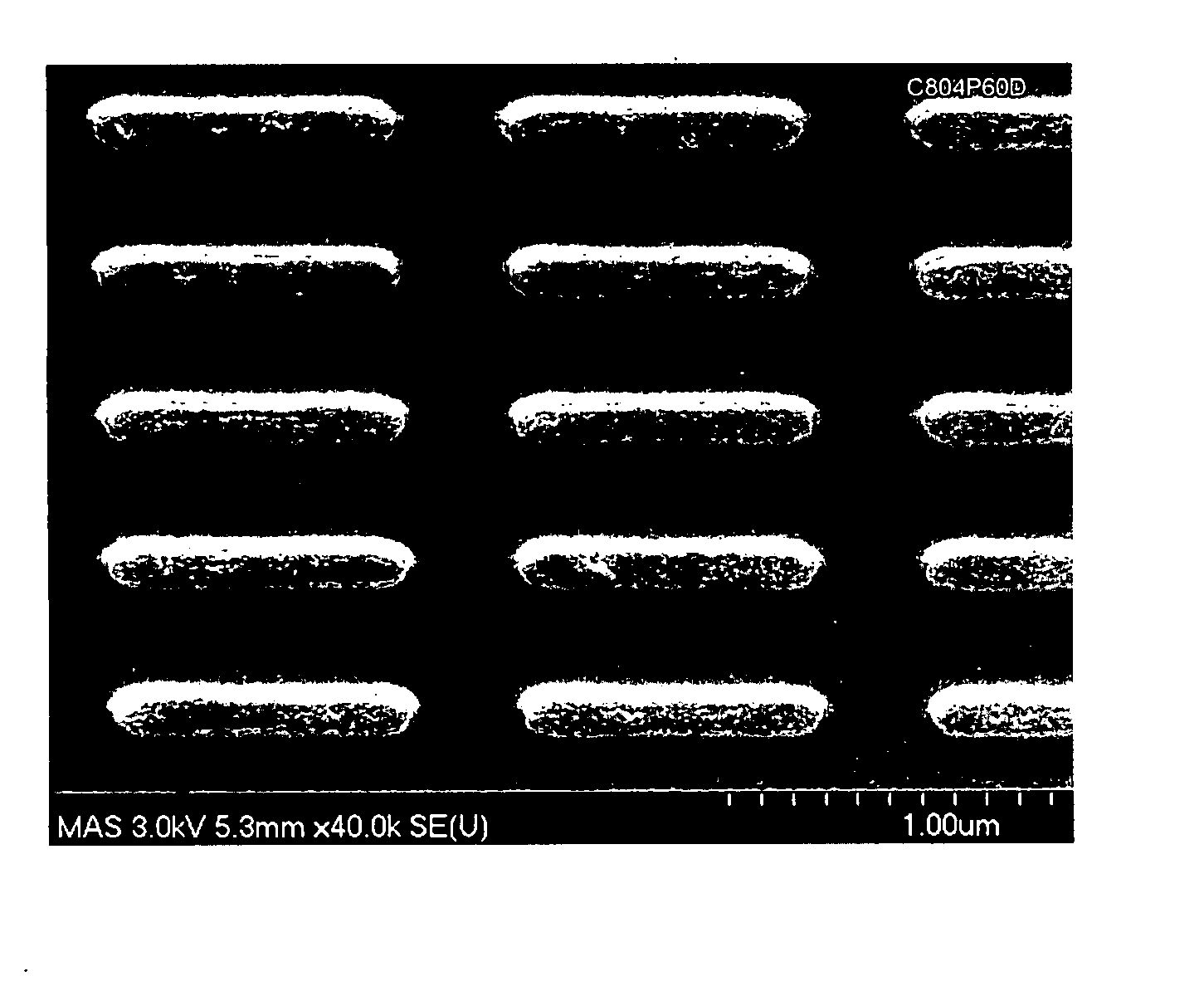Defectivity and process control of electroless deposition in microelectronics applications
a technology of electroless deposition and process control, applied in the direction of liquid/solution decomposition chemical coating, semiconductor/solid-state device details, non-metal conductors, etc., can solve the problems of electrical short, disrupt electrical flow, and damage to the device, so as to reduce the spontaneous decomposition of the bath, suppress nodular growth, and extensive hydrogen evolution
- Summary
- Abstract
- Description
- Claims
- Application Information
AI Technical Summary
Benefits of technology
Problems solved by technology
Method used
Image
Examples
example 1
Electroless Deposition Composition Comprising Stabilizer for Plating Ternary Alloy Comprising Co—W—P
[0078] A first electroless plating bath was prepared comprising the following components:
[0079] 20-40 g / L CoCl2.6H2O
[0080] 40-80 g / L C6H8O7 (citric acid)
[0081] 10-30 g / L H3BO3 (boric acid)
[0082] 4-12 g / L H2WO4 (tungstic acid)
[0083] 10-20 g / L H3PO2 (hypophosphorous acid)
[0084] 10-30 ppm CH3C(═NOH) C(═NOH)CH3 (dimethylglyoxime)
[0085] The electroless plating bath (1 L) was prepared at room temperature by preparing two solutions separately, Solution A (500 mL) and Solution B (500 mL), and combining the solutions to yield the electroless plating bath.
[0086] To prepare Solution A (500 mL): [0087] 1. CoCl2.6H2O dissolved in water in an amount sufficient, upon dilution to 500 mL, to yield a concentration which was twice the final concentration. [0088] 2. Added citric acid and boric acid to the Co2+ solution. [0089] 3. pH adjusted to about 7.0 using TMAH. [0090] 4. Pre-dissolved tungs...
example 2
Electroless Deposition Composition Comprising Stabilizer for Plating Ternary Alloy Comprising Co—W—P
[0107] A second electroless plating bath was prepared comprising the following components:
[0108] 20-40 g / L CoCl2.6H2O
[0109] 40-80 g / L C6H8O7 (citric acid)
[0110] 10-30 g / L H3BO3 (boric acid)
[0111] 4-12 g / L H2WO4 (tungstic acid)
[0112] 10-20 g / L H3PO2 (hypophosphorous acid)
[0113] 5-30 ppm C7H7NO2 (2-aminobenzoic acid)
[0114] pH adjusted to between 8.0 and 9.5.
[0115] One liter of this bath was prepared at room temperature according to a protocol similar to that described in Example 1.
[0116] This bath was used to plate a smooth and uniform deposit of the Co—W—P ternary alloy at a plating bath temperature between 65° C. and 80° C. Plating was initiated by Pd seeding. Plating for about 1 minute yielded a deposit having a thickness between about 100 Å and about 150 Å. Thus, the plating rate was between about 100 Å / min and about 150 Å / min. The deposited Co—W—P ternary alloy had an RMS...
example 3
Electroless Deposition Composition Comprising Stabilizer for Plating Quaternary Alloy Comprising Co—W—Mo—P
[0117] A third electroless plating bath was prepared comprising the following components:
[0118] 20-40 g / L CoCl2.6H2O
[0119] 40-80 g / L C6H8O7 (citric acid)
[0120] 0-30 g / L H3BO3 (boric acid)
[0121] 2-6 g / L H2WO4 (tungstic acid)
[0122] 5-15 g / L H3PO2 (hypophosphorous acid)
[0123] 200-300 ppm Calfax 10LA-75 (Pilot Chemical Co.)
[0124] 50-250 ppm MoO3 (Molybdenum oxide)
[0125] pH adjusted to between 8.0 and 9.5.
[0126] One liter of this bath was prepared at room temperature according to a protocol similar to that described in Example 1.
[0127] This bath was used to plate a smooth and uniform deposit of the Co—W—Mo—P quaternary alloy at a plating bath temperature between 65° C. and 80° C. Plating was initiated by Pd seeding. Plating for about 1 minute yielded a deposit having a thickness between about 140 Å and about 180 Å. Thus, the plating rate was between about 140 Å / min and abo...
PUM
| Property | Measurement | Unit |
|---|---|---|
| concentration | aaaaa | aaaaa |
| concentration | aaaaa | aaaaa |
| concentration | aaaaa | aaaaa |
Abstract
Description
Claims
Application Information
 Login to View More
Login to View More - R&D
- Intellectual Property
- Life Sciences
- Materials
- Tech Scout
- Unparalleled Data Quality
- Higher Quality Content
- 60% Fewer Hallucinations
Browse by: Latest US Patents, China's latest patents, Technical Efficacy Thesaurus, Application Domain, Technology Topic, Popular Technical Reports.
© 2025 PatSnap. All rights reserved.Legal|Privacy policy|Modern Slavery Act Transparency Statement|Sitemap|About US| Contact US: help@patsnap.com



